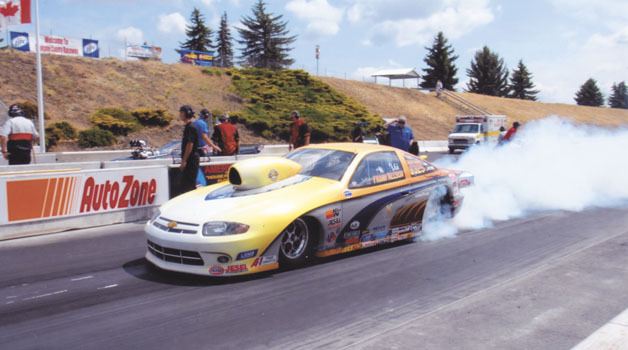Frank Nelson has not only raced a long time, he’s raced well for five decades.
When the 73-year-old Auburn man climbs behind the wheel of his race car, he pushes the machine and his racing skills to the limit on the drag strip.
This weekend will be no different. Beginning today, Nelson will compete in the Competition Eliminator class at the National Hot Rod Association Northwest Nationals at Pacific Raceways.
For Nelson, who got his start on the track in the 1950s, it’s a simple proposition.
“I don’t drink and I don’t smoke,” he said. “I just have my fun by seeing how fast I can make a car run.”
Nelson started racing when he lived in Alger.
“I helped build the roundy-round racetrack, the Skagit Speedway up there,” he said. “I had a ’39 Chevy that I raced (on the oval) and then started drags with a 1955 Chevy.”
After graduating from Auburn High School, Nelson joined the Air Force and found himself stationed at Schilling Air Force Base in Salina, Kan.
That was when he got serious about racing at a local drag strip.
After fulfilling his duty, Nelson moved back to Washington and continued his racing career.
“It really started in 1958 or ’59 at Arlington drag strip,” Nelson said. “Then I went to Pacific Raceways (then called Seattle International Raceway), the Bayview Timing Association, and the Shelton dragstrip and the Puyallup drag way.”
Throughout the 1960s, Nelson raced his ’55 Chevy at local tracks, winning numerous races in the Comp Eliminator class on the NHRA Division 6 Sportsman Circuit.
“In the old days here, in the ’60s and ’70s, I used to race Puyallup on Friday night, Seattle during the day on Saturday, Puyallup again on Saturday night and Sunday at Seattle again,” he said. “But then you could afford to race. It didn’t cost you several arms and a leg. This weekend here (the Northwest Nationals) is a $315 (entry fee) just for the wife and I.”
In 1973, Nelson switched to a 1967 Chevrolet Camaro, driving the muscle car to wins in the stock class at the Winternationals at Pomona, Calif., in 1977 and again in 1981.
In the ’80s, Nelson retired the Camaro, switching to a Chevy Vega, which he crashed on a rain-slick Seattle International strip in 1988.
“I rolled it over about six or seven times,” he said. “I didn’t get a scratch. It didn’t do nothing.”
Throughout the 1980s and 1990s, Nelson raced for Bothell Brothers in a Chevy Beretta, which was featured nationally in Chevy’s “Heartbeat of America” TV commercials. The car also garnered several best appearing car awards.
In 1995, Nelson was induction into the Division 6 NHRA Hall of Fame, which he considers one of his greatest accomplishments.
Now, retired after working 46 years for the railroad, Nelson spends most of his time helping his wife of 21 years, Ruth, with her business driving pilot cars for oversized truckloads.
A little over two years ago, he returned to Chevy after running Pontiac Firebirds through most of the early 2000s, purchasing a 2005 Cavalier Pro Stock car.
“Basically you used to drive the car in and off the street and raced,” Nelson said. “You can’t do that nowadays. This one here is $150,000, turn key running. It is just getting ridiculous. And sponsors are zilch anymore. I still have a little from Longhorn Barbecue.”
The per-race costs have gone up as well, he said.
“Right now my motor I have in my car right now costs me $21 a run, just for a gallon of fuel,” Nelson said. “I figure it costs me about $250 a run, for everything, like if you break a valve spring on the car. But I’ve never taken any money out of my paycheck for racing.”
Nelson, whose personal-best quarter-mile lap was a 7.18-second run at 190.750 mph, prides himself on not using electronic shifting and other devices in his car.
“I don’t have nothing in the car telling me how fast I’m going,” Nelson said. “I don’t have any electronics or nothing. It’s just from point A to point B, full out.
“Electronics is any man’s game”Nelson added. But those guys who run them, they can’t go back to the old way. They’d be lost.” “You can sit in the stand and let your car go. It shifts for you and everything. That ain’t no fun.”
Despite all the changes in racing, Nelson remains committed to the simplest aspect of the sport of drag racing – pure speed.
“Everything has changed,” he said. “But I just love to see how fast I can make it run.”


